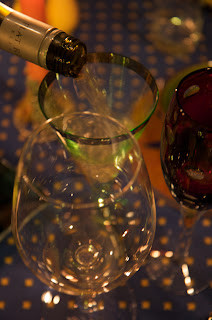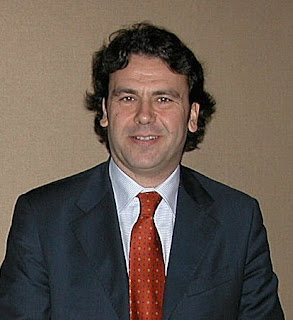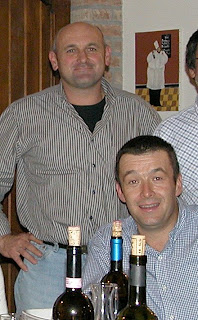The first time I visited this region, which is located less than 2 hours drive East of Toronto, was at the urging of my dear wife who wanted to show me the fine white sands and dunes of the Sandbanks Provincial Park on Lake Ontario. During that visit in the summer of 1998, I suddenly remembered an invitation from a guest in one of the wine dinners I presented who mentioned that I should visit his vineyards in the county.
Back in those days I had no idea this county even existed, but then he mentioned the neighbouring city of Belleville, and all I could think of was the cold winter temperature toward Kingston and Montreal as I am quite familiar with winter driving to Montreal to visit family. I immediately thought that this guy was crazy for even planting a vine in the region. As I vaguely recalled the area where his vineyards were located and happily drove in the direction of Waupoos, to my surprise, I saw rows upon rows of vines enjoying the summer heat and sharing the land with mature apple trees, which have been there for generations. Ed Neuser created his dream winery after retiring from his company in Toronto. The only wine available for tasting at the time was their Vidal, and it showed promise.
 |
| Pinot Gris and Pinot Noir from Stanners Vineyards |
|
This truly excited my curiosity and we went about exploring the county for locations for possible vineyards - a dream that, one day, we may pursue. From my many years of travels to various wine regions, I immediately saw the potential for making fine wines in the Hellier area of the county, owing to its large mineral deposit, with light slopes and excellent exposure and microclimate. I can tell you, we walked into a Remax Real Estate office and met a nice salesman who offered to show us around properties for sale. This memorable excursion showed us a 100-acre farm that was for sale at $99K, including a barn and a century home; 200-acre for $130K, and a few others that were so attractively priced. We never ended up buying a property but continued to visit the country every summer for its bucolic and peaceful setting. Sure enough, we started noticing new vineyard plantings and wineries in the Hellier area, and by 2005, several estates were already opening their doors for tastings and tours.
 |
| Richard Karlo, Leo & Vivian in the Karlo tasting room |
This brings me back to the new discoveries I made during my recent visit to the county after a few years of absence. To say that I am impressed with the wines is an understatement. In fact, I was completely blown away by the level of complexity and style that I was incredulous, to say the least. Tasting Pinot Gris from Stanners Vineyards, website:
http://www.stannersvineyard.ca/, was a revelation of the great potential for this varietal in the region. The winery was built using the straw insulation method. With only 2 days in the county, my wife and I also visited Red Tail Vineyards, website:
http://www.redtailvineyard.com/en/, where another Pinot Gris showed a lot of promise with its sheer acidity and mineral notes. This small winery is off-the-grid in terms of power use. They depend solely on several solar panels in the property for their energy needs. On highway 33, we visited Hellier Creek Estates, website:
http://www.hilliercreekestates.com/, and discovered an amazing Rosé made from Gamay - bright garnet colour, ripe berry on the nose with a superb palate that hints of mineral, fruits and balanced acidity - one of the best rosés I have ever tasted in Canada! The young winemaker, Lauren Horlock, is crafting some very impressive wines which include the Estate Chardonnay and Riesling - both wines show the elements of the region's terroir, while maintaining a classic and elegant style of the varietal. Next on our list was Karlo Estates, website:
www.karloestates.com, on Danforth road, created by Richard Karlo, a big, nice bear of a guy who's been making wine for friends in the last 20 years. No doubt, the wines he's making are the next wave of top notch quality wines to come out of Ontario. His Estate Chardonnay and Riesling are the finest you'll ever come across in Canada. But what surprised me the most was tasting the Quintus, a wine made from a blend of five Bordeaux varietals and which I can only describe as awesome! He also made a dessert wine made from Frontenac hybrid that offers lots of character and ripeness, not to mention the racy acidity on the finish. Just to throw everyone off, he also created a Port-style dessert wine - which I found to be more similar to a very fine Amarone - luscious, earthy and very ripe black berry combine to create a complex wine, with no hint of oxidized notes one finds in a Port.
 |
| Breakfast fruit starter |
On this recent visit to the county, I have learned that that are now close to 40 licensed wineries in the county - a real growth in just over a decade since my first discovery of the region. Other notable wineries in the Hellier/Wellington area include Huff Estates, The Grange, Closson Chase and Hinterland, website:
http://www.hinterlandwine.com/ - this one's a real treat as Jonas, the owner and winemaker is committed to making the best sparkling wine in the region. I would agree with his goal as we tasted a fine Rosé Brut that could easily knock out the competition..yes, even from Champagne. By the way, this was the property we looked at in 1998 for $99K!
 |
| Grilled duck breast on a bed of fava beans |
This visit would not be complete without a mention of places we stayed and dined. Henderson House B & B is a delightful stop in Consecon, with a peaceful garden setting and wonderful hospitality, not to mention the well-made breakfast. We also enjoyed a leisurely lunch at the Tall Poppy, with delicious sandwiches and salads from organic produce straight from the owner's garden. We also dined at East & Main, website:
http://www.eastandmain.ca/index.html, in Wellington. My former client who was the sommelier at a plush restaurant in Toronto opened East & Main in August 2009 - a bistro dedicated to locally sourced food. My dinner was memorable for the well-executed grilled duck breast on a bed of sautéed fava beans. Kimberly Humby and her partner, David have brought their skills to make this restaurant one of the best places for lunch and dinner in the county. Another famous chef runs a popular bistro called Harvest, in nearby Picton.
I believe that Prince Edward County is now poised to capture serious attention from wine and food lovers alike. What is happening in this tiny part of Eastern Ontario is giving real hope to the positive evolution of wine culture in Canada. The time has truly come for us to be proud of Ontario wines in the global marketplace. Some people even refer to the county as the Sonoma to Niagara's Napa comparison. In many ways, it is quite true in terms of the more pastoral landscape of the county, as well as the growing attention to local fare and more down to earth winery designs and presentation. Not having a casino or the falls obviously attracts only visitors who really want to escape for some peace and quiet, with some fine dining and excellent wines.
 |
| Sunset on Lake Ontario |


















